The First Cultural Economy International Summer School
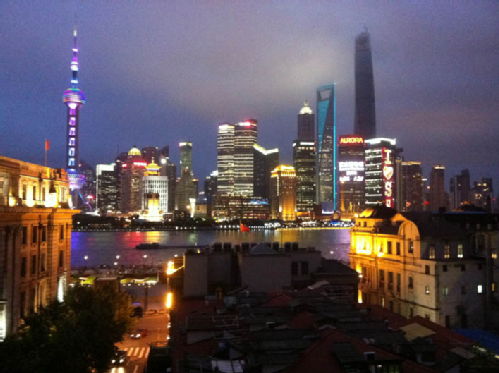
This is a view of Shanghai Pudong from a bar we liked to frequent after a hard days study ! The First Cultural Economy International Summer School -- one of the activities of the newly established Shanghai City Lab -- has just been held at the Shanghai Jiaotong University (SJTU). It is organized as part of a broader venture called the Shanghai City Lab, just funded as a Warwick-Monash Alliance project (but with supplementary funds from Monash and SJTU). It was a success, and enjoyed by the eight faculty and the 37 students enrolled. See: www.shanghaicitylab.com
The students at this first summer school came from all over China and from Melbourne Australia – masters, PhD students and cultural sector professionals. The school was held on the hospitable old campus of the university, situated on the southern edge of the old French concession. It began on Monday morning with a group photo against the monument in the central park of the campus. It continued with ten days of lectures, talks, field trips and student group work, punctuated by a weekend break. Until the official photo of the whole group arrives – here are some informal ones….(some weird distortion make Justin and Shane on the left look shorter, when they are far taller!).
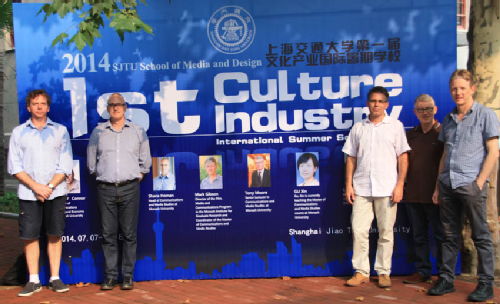
SJTU translated cultural 'economy' as cultural 'industry', which for them made more sense -- for us, of course, the meaning is a little more specific. Professor Shan Shilian and Prof. Li Kang Hua of SJTU delivered detailed lectures on cultural policy and creative industries in China, and specifically in Shanghai -- policy insights hard to obtain outside China. The Chinese government has massively invested in both the creative industries and creative cities policy trends, both of which oscillate between an urban development agenda and hard-nose small business incubation.
The growth of Shanghai is something we witness every time we return – huge new art museums, shopping malls and apartment blocks. In our field trips we visited (among other places) the M50 cluster and 1933 cluster, where at the latter (in the Centre for the Creative Industries) we held a short seminar. We further explored the contemporary art scene and creative urbanism of the old EXPO site, the Long Museum (Pudong), Rock Bund Art Museum, and The Power Station of Art. In the evenings we walked, ate and drank in the French concession, the Bund, Xintiandi and Tianzifang, among other places.
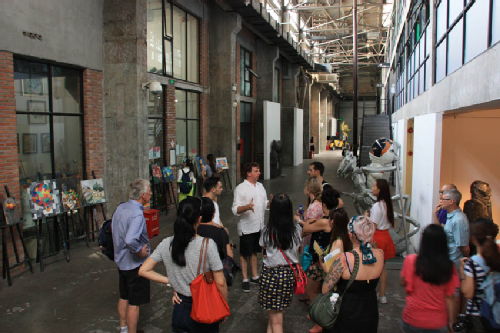
We also got highly stimulating talks on contemporary Shanghai by resident American Lisa Movius (director of the MAO Livehouse contemporary music centre) and from Ireland, Connor Roche (the lead in BOP cultural consultancy Shanghai office) and David Lee – pioneer in the growing ‘maker and hacker’ subcultures of China. The summer school ended on Friday 18th with the three student research groups presenting the results of their projects – on urban culture, cultural quarters and the independent music scene in Shanghai. I must say, we threw the students in at the deep end with urban research in the vast urban complex of Shanghai city. And we were taken aback by how well they did – and the summer school ended with the presentation of the certificates – by Professor Shan Shilian, Distinguished Professor of SJTU and a national authority on cultural policy and economy in China.
What’s going to happen next year? This is the first summer school, and from our experiences and student feedback will develop an exciting, invigorating new program. The Shanghai City Lab, which runs the summer school, is developing an international research profile – but I’ll leave that for another blog. As for this last photo -- Sean is taking a group 'selfie' on his new extendible hand-held selfie pod.
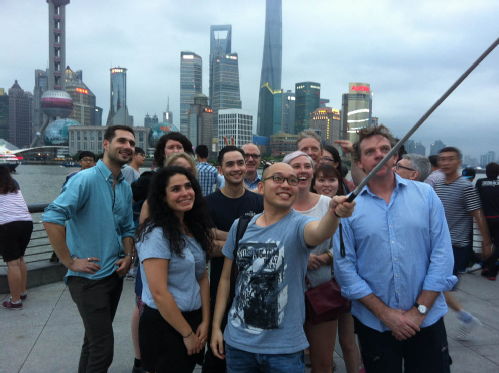
 Jonathan Vickery
Jonathan Vickery

 Please wait - comments are loading
Please wait - comments are loading
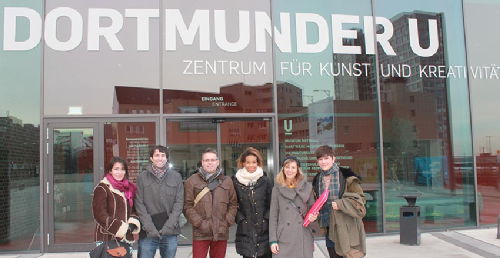
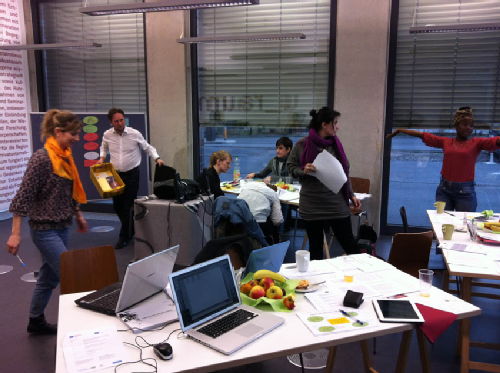

 e arts and culture and their relationship with their broader publics. An impressive range of papers and presentations, began with reflections from the playwright America Vera-Zawala on her work in community-based theatre, one example of which concerned the impact of the closure of a mill on the Swedish town of Norrsundet. A play was written and produced with the local community at the precise time of this trauma and, amongst the many fascinating aspects of this process, what stuck with me was the relationship between the artist and the community and the vexed question of who had the responsibility for creative decision making. Participants expressed considerable anxiety about taking control over the direction of the project in deference to the accredited expertise of the theatre professionals. They in turn, for reasons relating to their commitment to the integrity of the process they had initiated, were equally reluctant to impose the right way to proceed. It was an impasse resolved by nothing more complicated than time and dialogue, through which participants took eventual ownership of the narratives of their own experiences.
e arts and culture and their relationship with their broader publics. An impressive range of papers and presentations, began with reflections from the playwright America Vera-Zawala on her work in community-based theatre, one example of which concerned the impact of the closure of a mill on the Swedish town of Norrsundet. A play was written and produced with the local community at the precise time of this trauma and, amongst the many fascinating aspects of this process, what stuck with me was the relationship between the artist and the community and the vexed question of who had the responsibility for creative decision making. Participants expressed considerable anxiety about taking control over the direction of the project in deference to the accredited expertise of the theatre professionals. They in turn, for reasons relating to their commitment to the integrity of the process they had initiated, were equally reluctant to impose the right way to proceed. It was an impasse resolved by nothing more complicated than time and dialogue, through which participants took eventual ownership of the narratives of their own experiences.


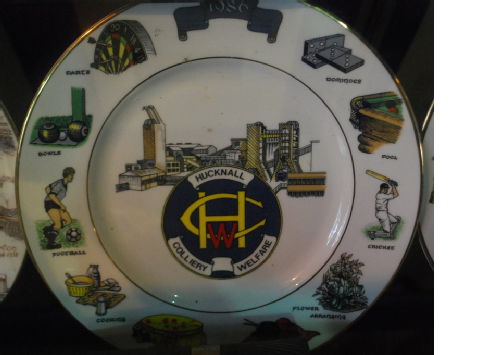 I thought it was worth dusting the blog off to write about the new exhibition in the Mead Gallery at Warwick Arts Centre,
I thought it was worth dusting the blog off to write about the new exhibition in the Mead Gallery at Warwick Arts Centre, 



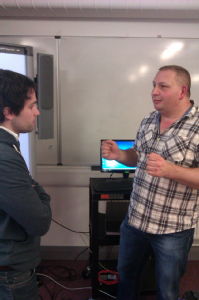


 Loading…
Loading…

